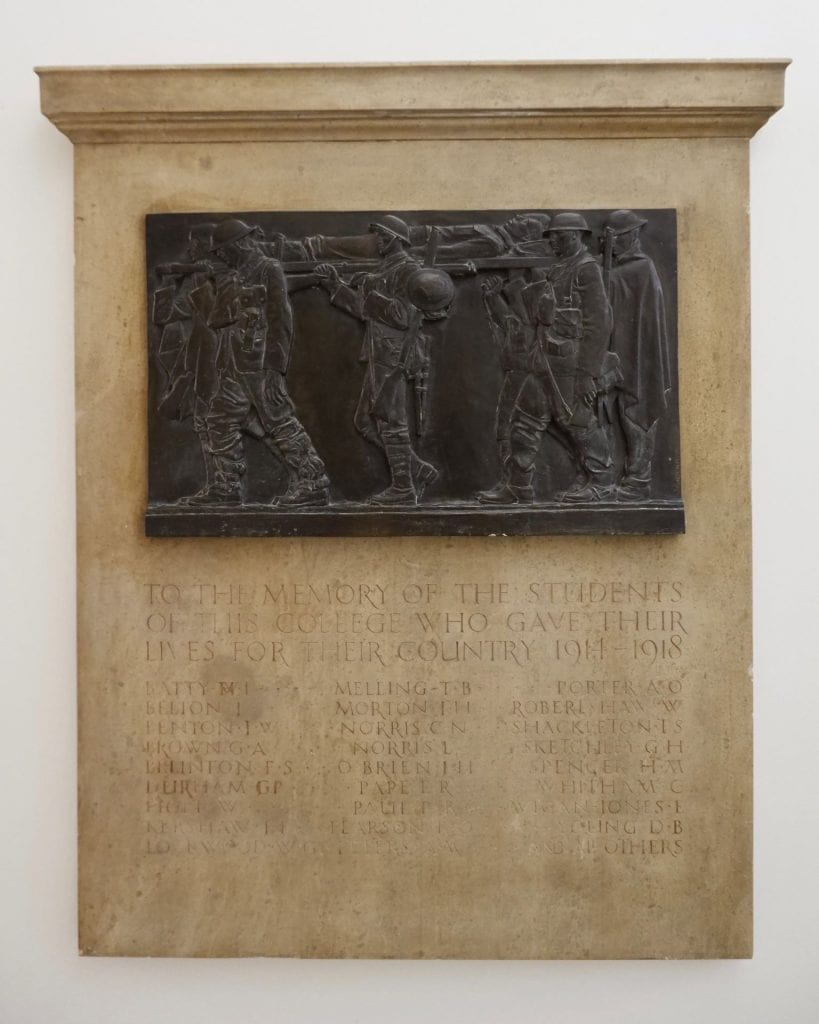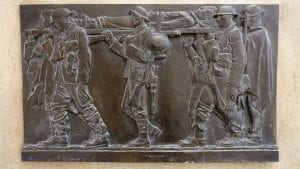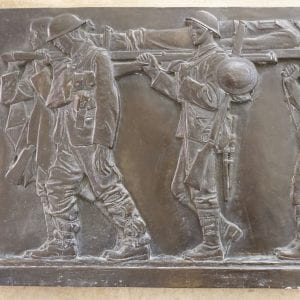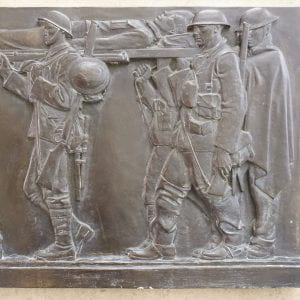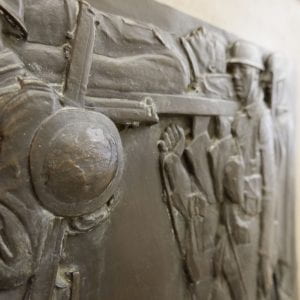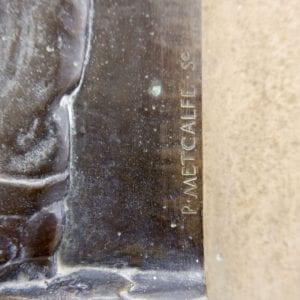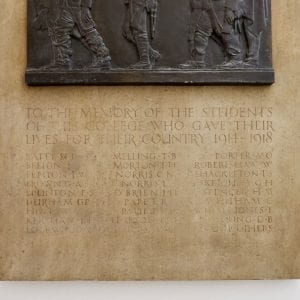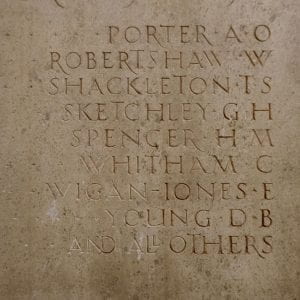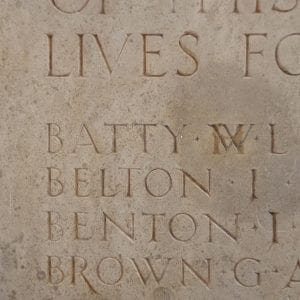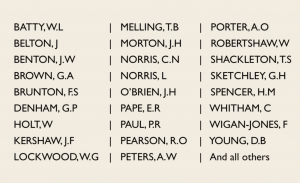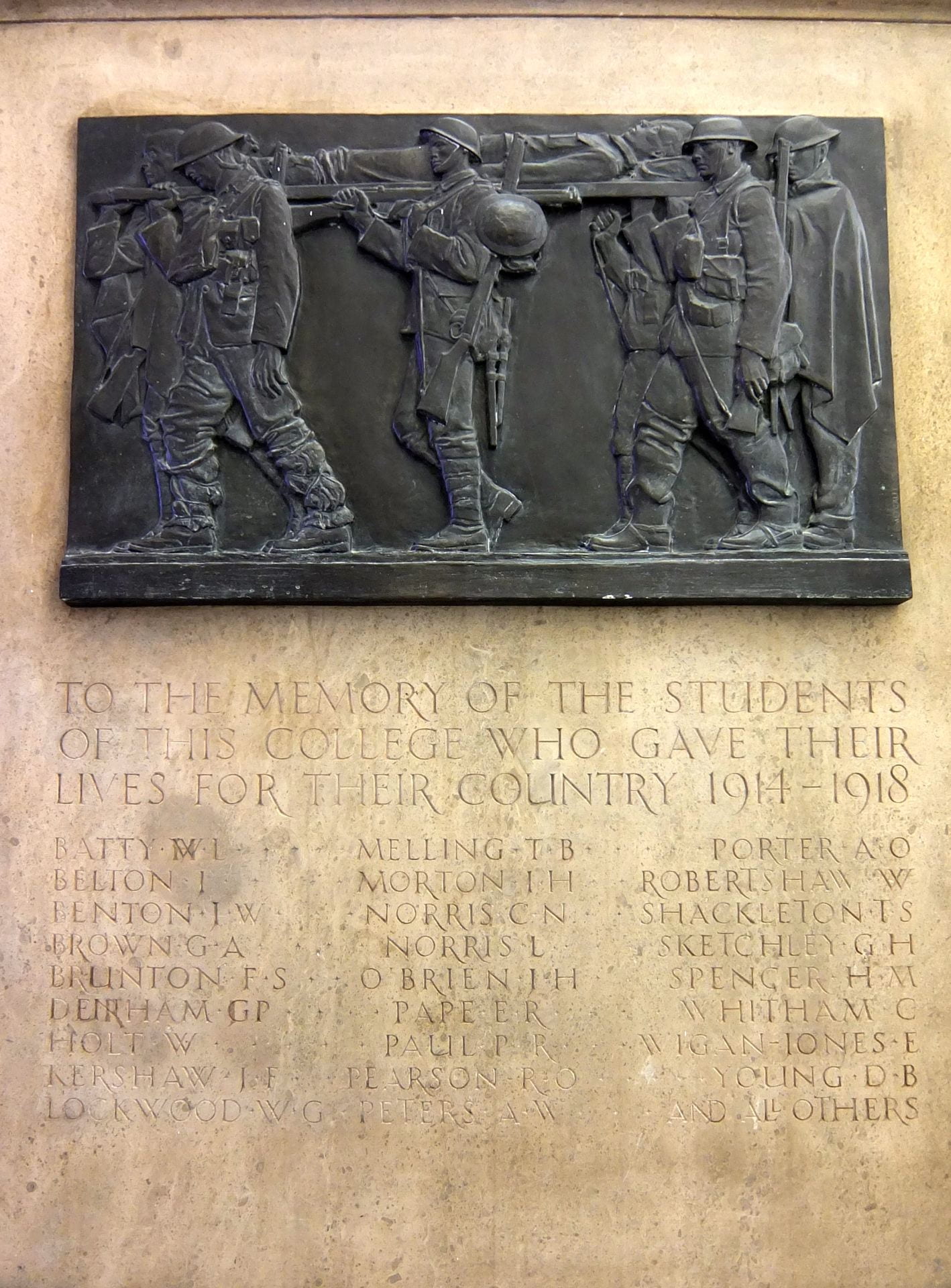
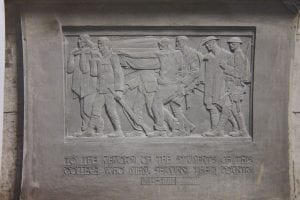
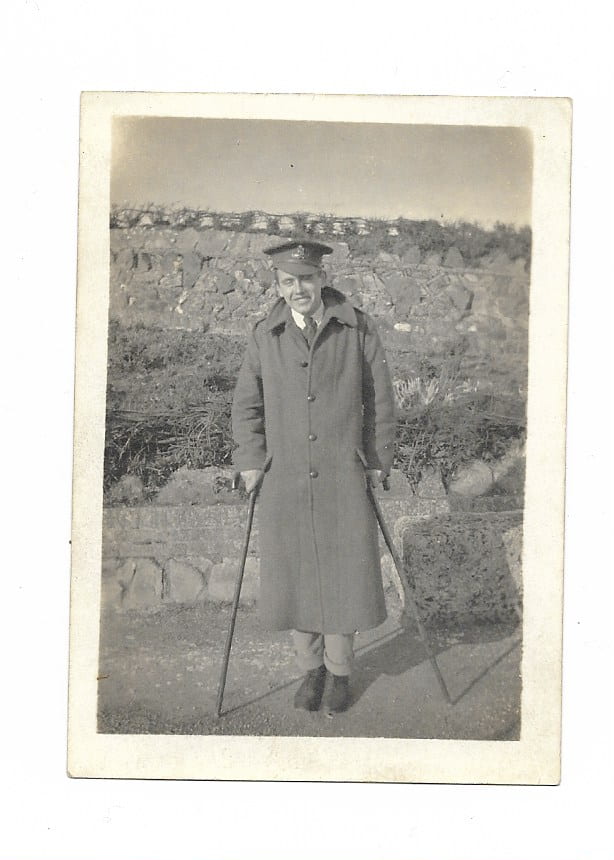
Wakefield-born Percy Metcalfe (1895-1975), the memorial’s sculptor, had only been at the College for just over a term when he enlisted on 3 March 1915. A year later, in July 1916, while serving with the Royal Field Artillery in France, he received a severe leg injury that required evacuation back to Britain, away from the battlefields, to a period working in munitions at the National Shell Factory in Leeds instead. Discharged from the army in December 1918, he seems to have returned to the College the following year.
No record has been found yet of any commission by the College or the Board of Education for a memorial. Instead the minutes of the student-run Junior Common Room (JCR) Committee reveal that the students themselves had taken the initiative as early as November 1916, when they considered the compilation of a Roll of Honour to be written on vellum. Almost exactly two years later, with the war coming to an end, the desire to have a Roll or, significantly, ‘some other memorial’ that would ‘be the work of students’ was raised again, this time by ‘Mr MacKenzie’ – possibly referring to Endymion L. MacKenzie – a student who had been invalided out of the army. On 6 December 1918 the committee heard again from MacKenzie and a ‘Mr Thomson’ reporting back from a Memorials Committee, seemingly consisting of themselves and a ‘Miss Taylor’, that the preference was for a marble and bronze wall tablet. At a couple of subsequent meetings this was formally agreed by the JCR, as was the raising of £150 by subscription to pay for it and that ‘old students be asked for designs’. On 22 October 1919 the minutes note a proposal that ‘a War Memorial Committee be elected’, followed by a request on 19 April 1920 ‘to use the Smoke Room for the purpose of adjudicating the War Memorial Design’ (along with a query about the progress of the Roll) – but there is no subsequent record of a winning design. Appearing in a student magazine of 1921, however, is a photograph of a wreath-style tribute put up in the College on Armistice Day 1920 and then, presumably, taken down: perhaps this was the Roll of Honour noted in the JCR minutes. Sadly now lost, there is no suggestion that this was considered temporary at the time: it was proposed that it should be put up again for the next commemoration later in the year. This did not happen.
It is possible that the JCR and the College, were aware that an alternative to the wreath existed already- and this may have been the result of the JCR’s original proposals from 1918: a design by Percy Metcalfe for a memorial tablet had been included in the Royal Academy of Arts’ War Memorial Exhibition held in the late autumn of 1919.
Rather than being simply a choice between different styles of commemoration, there could be a mundane explanation for the wreath’s eventual replacement with Percy’s more substantial memorial: someone may have noticed that a number of the thirty-two names included should not have been. To date research has failed to find any evidence that at least seven of those listed studied at the College . Only one of these re-appears in the list below Percy’s bas-relief, a ‘G.A.Brown’, while the death of W.G. Lockwood, who had been a student at the College (and appears in both the wreath and the memorial), was discovered to have had nothing to do with military service. Interestingly, one significant other mistake does recur, implying that the same listing was being referred to – an ‘H’ instead of ‘W’ for William Liley Batty’s initials. This and other slight transcription errors have been corrected at some point, while a new one was made with an ‘E’ taking the place of ‘F’ for Frederick Wigan Jones.
It is possible that Percy might have completed the construction of the memorial – rather than merely the design – while at the College or soon after he left in July 1921. Research has revealed that the finished work was unveiled on Armistice Day, the following November, by the somewhat controversial former commander of the Fifth Army, Lieutenant-General Hubert de la Poer Gough. The occasion was noted in the February 1922 issue of the ‘new’ student magazine, as was the ‘dignity of the memorial and the simplicity of the ceremony’ as a ‘small though fitting tribute to those of the College who gave their lives’.
After leaving the College Percy went on to work as a studio assistant to another former student, Charles Sargent Jagger. He also developed a productive relationship with the modernist architect, Joseph Emberton (who had also studied at the RCA). By the late 1920s, unable to stand for long periods due to his damaged leg, Percy stopped making large sculptural work, becoming famous instead, in his own right, for his elegant coin and medal design, as well as for his work with the Ashtead Pottery.
